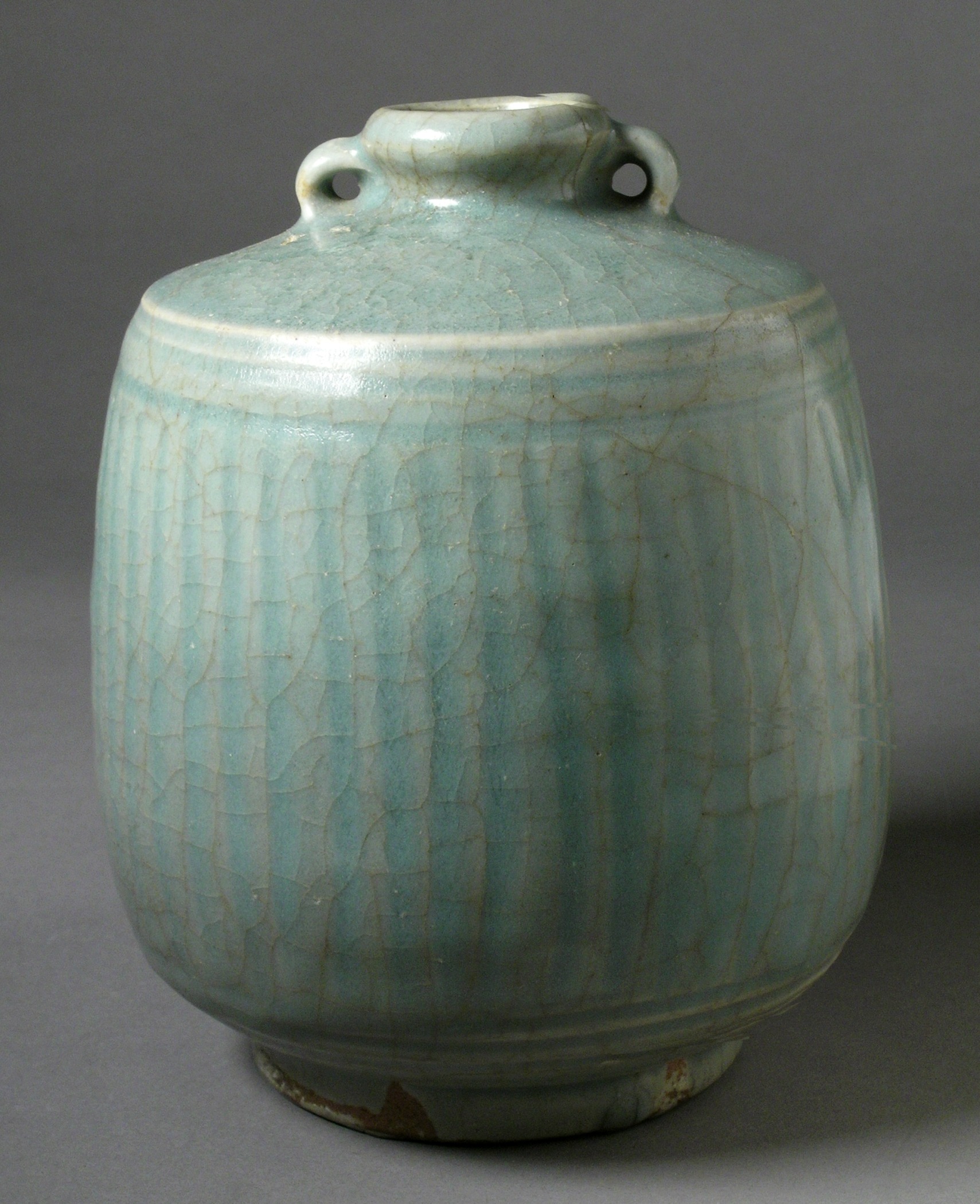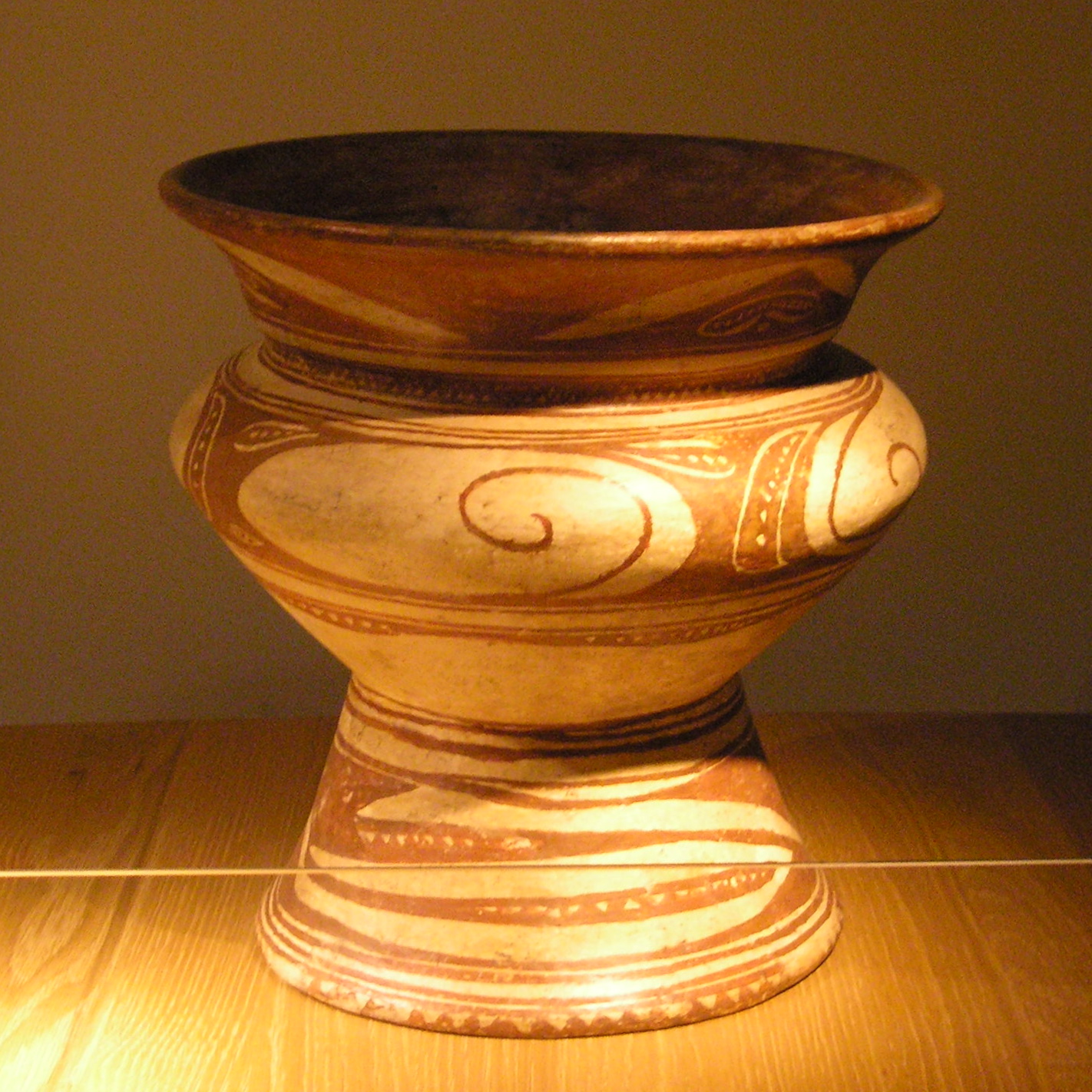Thai ceramics on:
[Wikipedia]
[Google]
[Amazon]
 Thai ceramics are
Thai ceramics are
 The earliest trace of Thai ceramics ever recorded is the
The earliest trace of Thai ceramics ever recorded is the
"History in five colors : asianewsnet"
/ref> The
Si Satchanalai Historical Park , Ceramic industry
Thailand For Visitor.com , Ceramic Kilns at Si Satchanalai
History of ceramics
 Thai ceramics are
Thai ceramics are ceramic art
Ceramic art is art made from ceramic materials, including clay. It may take forms including artistic pottery, including tableware, tiles, figurines and other sculpture. As one of the plastic arts, ceramic art is one of the visual arts. ...
and pottery
Pottery is the process and the products of forming vessels and other objects with clay and other ceramic materials, which are fired at high temperatures to give them a hard and durable form. Major types include earthenware, stoneware and ...
designed or produced as a form of Thai art
Traditional Thai art is primarily composed of Buddhist art and scenes from the Indian epics. Traditional Thai sculpture almost exclusively depicts images of the Buddha, being very similar with the other styles from Southeast Asia, such as Khmer ...
. The tradition of Thai ceramics dates back to the third millennium BCE. Much of Thai pottery and ceramics in the later centuries was influenced by Chinese ceramics
Chinese ceramics show a continuous development since Chinese Neolithic, pre-dynastic times and are one of the most significant forms of Chinese art and ceramics globally. The first pottery was made during the List of Palaeolithic sites in China, ...
, but has always remained distinct by mixing indigenous styles with preferences for unique shapes, colors and decorative motifs. Thai pottery and ceramics were an essential part of the trade between Thailand and its neighbors during feudalistic times, throughout many dynasties.
Thai ceramics show a continuous development through different clay types and methods of manufacturing since the prehistoric period and are one of the most common Thai art forms. The first type of Thai ceramics ever recorded was the Ban Chiang, dating back to about 3600 BCE. Sukhothai ware, the most famous style of Thai ceramics, is exported to many countries around the world today.
Medieval Thai wares were especially influenced by Chinese celadon
''Celadon'' () is a term for pottery denoting both wares glazed in the jade green celadon color, also known as greenware or "green ware" (the term specialists now tend to use), and a type of transparent glaze, often with small cracks, that wa ...
s, and later by blue and white porcelain.
History
 The earliest trace of Thai ceramics ever recorded is the
The earliest trace of Thai ceramics ever recorded is the Ban Chiang
Ban Chiang ( th, บ้านเชียง, ) is an archaeological site in Nong Han district, Udon Thani province, Thailand. It has been a UNESCO World Heritage Site since 1992. Discovered in 1966, the site first attracted interest due to its ...
, said to date back to about 3600 BCE and found in what is the present day Udon Thani Province
Udon Thani province ( th, อุดรธานี, ) is one of Thailand's seventy-six provinces (''changwat'') which lies in upper northeastern Thailand, also called Isan. It is bordered by the provinces of Nong Khai to the north, Sakon Nakhon ...
, Thailand
Thailand ( ), historically known as Siam () and officially the Kingdom of Thailand, is a country in Southeast Asia, located at the centre of the Indochinese Peninsula, spanning , with a population of almost 70 million. The country is b ...
. The ceramics were earthenware. Common forms of excavated artifacts were cylinders and round vases. The early pots were undecorated while the later ones were carved with geometric patterns and swirling designs. Each of the pieces was also found to have axial perforations which showed that people at that time had knowledge of using tools.
The second important prehistoric Thai ceramics is the Ban Kao which was in Kanchanburi Province. Unlike Ban Chiang, Ban Kao's wares were thinner and had a glossy surface finish. What is interesting is that there are a wide range of forms and shapes, some of which are similar to bronze wares of Han China. After the prehistoric period the kingdom that emerged at about 1st century CE was the Mons. They made considerable ceramics uses in relation to religious symbols in the form of figurines. Ceramics were also used as a building decorations.
Following the Mons were the Khmers
The Khmer people ( km, ជនជាតិខ្មែរ, ) are a Southeast Asian ethnic group native to Cambodia. They comprise over 90% of Cambodia's population of 17 million.
who appeared in about the 9th century CE Little is known about Khmer ceramics because archaeological research has focused on their great achievements in stone and bronze sculpture. The ceramics of Khmer era are quite interesting. Many of the designs include parts from animal and have a dark brown glaze finish.
The best known of all traditional Thai ceramics are those from Sukhothai and Sawankhalok. Sukhothai wares were generally treated with a creamy white slip and decorated in black with an opaque or greenish glaze. The most famous Sukhothai kiln is the Si Satchanalai. Examples of the wares can be found in many leading museums of the world. Sawankhalok products tend to be more finely made than the Sukhothai ones. These products are incised and often include animal shapes. Some of the original examples can be found in many private collections and museums today. Ceramics based on these styles are still made at present and widely exported, particularly to the Philippines and Indonesia.
Si Satchanalai
One of the most famous examples of Thai pottery are from the Sukhothai period from the kilns of S(r)i Satchanalai, which is around Sawankalok in north-central Thailand. This period started in the 13th century CE and continued until the 16th century. The art reached its apex in the 14th century. Examples of Si Satchanalai can be found in many leading museums of the world. Sukothai traded with these precious ceramics with its neighbours. The transport was often by ship across the oceans. A number of Si Satchanalai ceramics in excellent condition have been excavated in ship wrecks in the Gulf of Thailand, the Andaman Sea and other waters.18th century to present day
Bangkok
Bangkok, officially known in Thai as Krung Thep Maha Nakhon and colloquially as Krung Thep, is the capital and most populous city of Thailand. The city occupies in the Chao Phraya River delta in central Thailand and has an estimated populati ...
, the capital of Thailand, was founded in 1782 and is represented by the Bencharong and Lai Nam Thong wares. It would seem that Bencharong ceramics first made their appearance during the final phases of the Ayutthaya period in the 18th century, while the Lai Nam Thong wares developed during the 19th century. Bencharong, meaning five colours in Thai, is a hand painted enamel over glazed ceramic. Bencharong was originally made in China and exclusively designed by Thai artists for Thai royals during the 18th – 19th centuries. Lai Nam Thong is an exclusive version of the Bencharong using gold embellishment instead of gold enamel. Both of these wares can be found in private collections of well-to-do citizens./ref> The
Southeast Asian Ceramics Museum
The Southeast Asian Ceramics Museum ( th, พิพิธภัณฑสถานเครื่องถ้วยเอเชียตะวันออกเฉียงใต้, links=no) is a history museum in Bangkok University, Pathum Thani ...
was opened in 2005 in Bangkok.
Types
See also
*Thai art
Traditional Thai art is primarily composed of Buddhist art and scenes from the Indian epics. Traditional Thai sculpture almost exclusively depicts images of the Buddha, being very similar with the other styles from Southeast Asia, such as Khmer ...
* Burmese ceramics
* Chinese ceramics
Chinese ceramics show a continuous development since Chinese Neolithic, pre-dynastic times and are one of the most significant forms of Chinese art and ceramics globally. The first pottery was made during the List of Palaeolithic sites in China, ...
* Lao ceramics
* Khmer ceramics
* Philippine ceramics
* Tapayan
''Tapayan'' or ''tempayan'' (also known as ''balanga'', ''belanga'', or ''banga'') are large wide-mouthed earthenware or stoneware jars found in various Austronesian cultures in island Southeast Asia. Their various functions include fermenting ...
References
Literature
* * * * * * * * *External links
{{commons category, Ceramics of ThailandSi Satchanalai Historical Park , Ceramic industry
Thailand For Visitor.com , Ceramic Kilns at Si Satchanalai
History of ceramics
ceramics
A ceramic is any of the various hard, brittle, heat-resistant and corrosion-resistant materials made by shaping and then firing an inorganic, nonmetallic material, such as clay, at a high temperature. Common examples are earthenware, porcelain ...